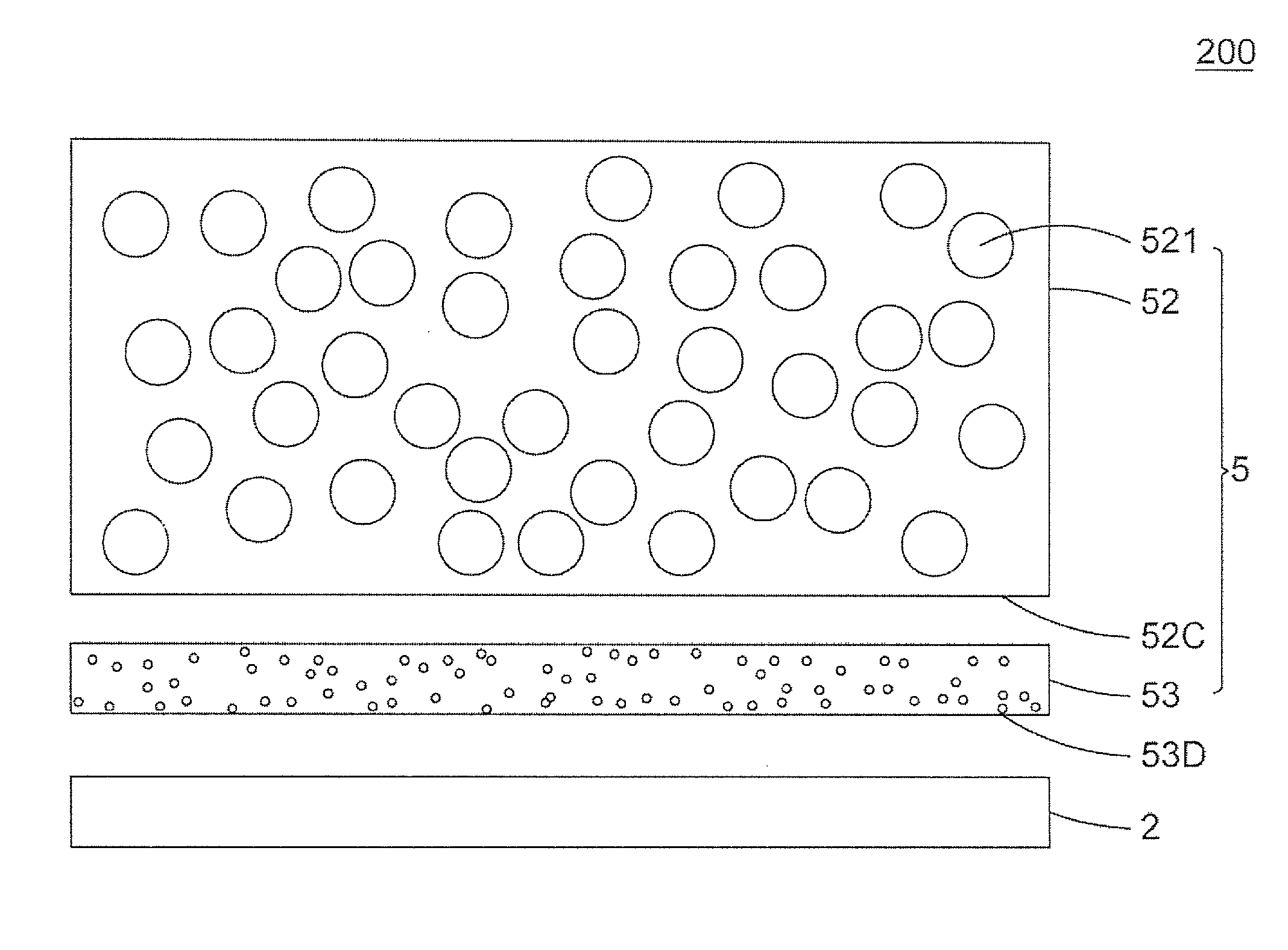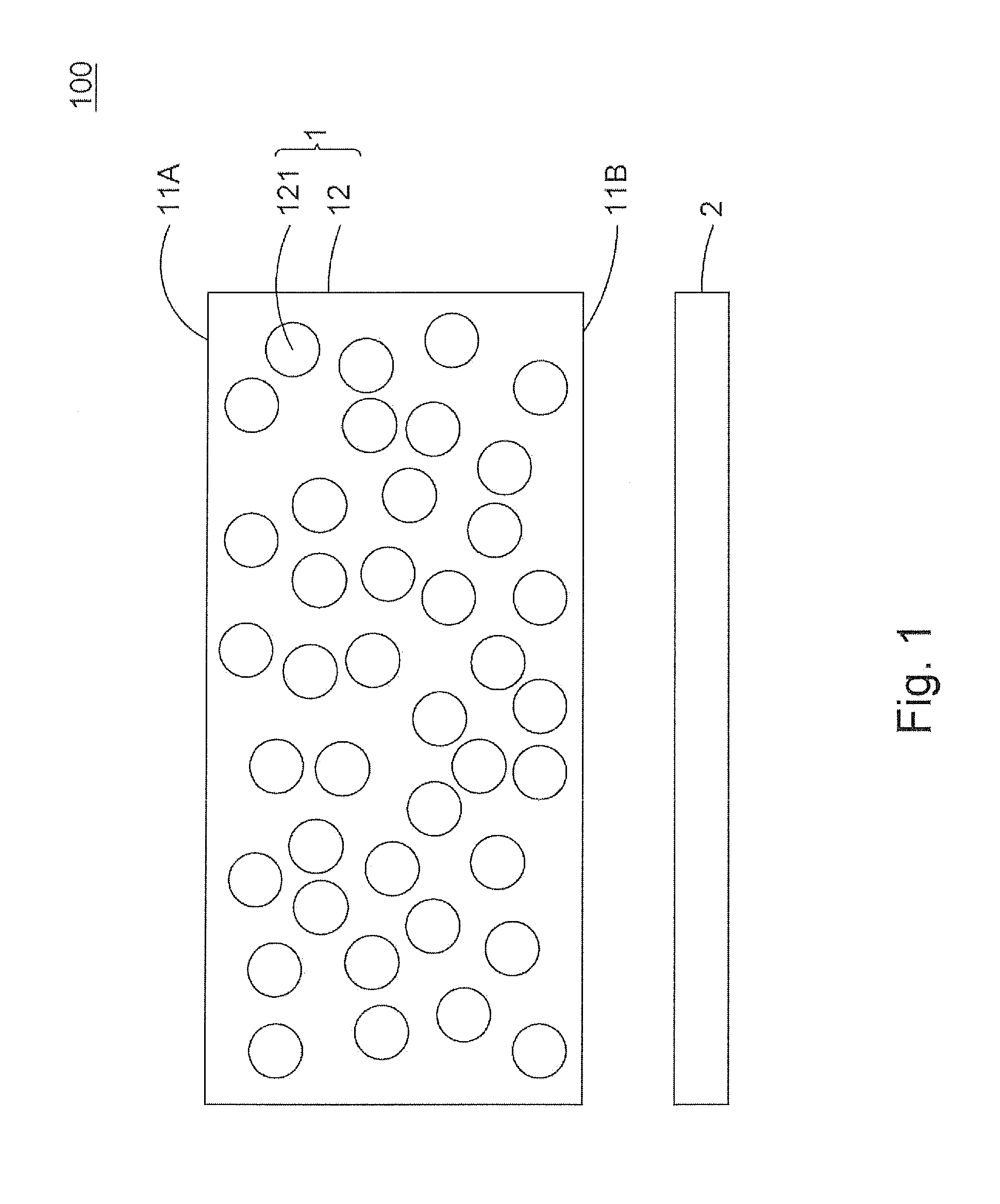Polymeric electret film and method of manufacturing the same
a polymer electret and film technology, applied in the field of electret, can solve the problems of complex charging phenomena, difficult to retain surface charges, and inability to reorient electrical polarization, and achieve the effect of improving the polarized initial surface potential and lowering the surface potential decay ra
- Summary
- Abstract
- Description
- Claims
- Application Information
AI Technical Summary
Benefits of technology
Problems solved by technology
Method used
Image
Examples
experimental example 1
[0073]Please refer to both FIGS. 6A and 6B. The polymeric electret film 100 of the present experimental example 1 is a polymeric electret film 100 according to the first preferred embodiment of the present invention.
[0074]Therein, the polytetrafluoroethylene film 1 of the polymeric electret film 100 was made of expanded porous polytetrafluoroethylene as described previously in the first preferred embodiment.
[0075]In addition, the experimental example 1 also adopted polytetrafluoroethylene and fluorinated ethylene-propylene as the material of which the polytetrafluoroethylene film 1 was made of.
[0076]Accordingly, there were three types of the polymeric electret film 100 in the experimental example 1, including:[0077]1. Sample A: the polytetrafluoroethylene film 1 made of expanded porous polytetrafluoroethylene, with a thickness of 15 μm;[0078]2. Sample B: the polytetrafluoroethylene film 1 made of polytetrafluoroethylene, with a thickness of 15 μm; and[0079]3. Sample C: the polytetra...
experimental example 2
[0089]Please refer to both FIGS. 7A and 7B. The polymeric electret film 100 of the present experimental example 2 is a polymeric electret film 100 according to the first preferred embodiment of the present invention.
[0090]Therein, the polytetrafluoroethylene film 1 of the polymeric electret film 100 was made of expanded porous polytetrafluoroethylene as described previously in the first preferred embodiment.
[0091]In addition, the experimental example 2 also adopted polytetrafluoroethylene and fluorinated ethylene-propylene as the material of which the polytetrafluoroethylene film 1 was made of.
[0092]Accordingly, there were three types of the polymeric electret film 100 in the experimental example 2, including:[0093]1. Sample D: the polytetrafluoroethylene film 1 made of expanded porous polytetrafluoroethylene, with a thickness of 25 μm;[0094]2. Sample E: the polytetrafluoroethylene film 1 made of polytetrafluoroethylene, with a thickness of 25 μm; and[0095]3. Sample F: the polytetra...
experimental example 3
[0102]Please refer to both FIGS. 8A and 8B. The polymeric electret film 100 of the present experimental example 3 is a polymeric electret film 100 according to the first preferred embodiment of the present invention.
[0103]Therein, the polytetrafluoroethylene film 1 of the polymeric electret film 100 was made of expanded porous polytetrafluoroethylene as described previously in the first preferred embodiment.
[0104]There were two types of the polymeric electret film 100 in the experimental example 3, including:[0105]1. Sample A: the polytetrafluoroethylene film 1 made of expanded porous polytetrafluoroethylene, with a thickness of 15 μm; and[0106]2. Sample G: the polytetrafluoroethylene film 1 made of polytetrafluoroethylene, with a thickness of 10 μm; and
[0107]After Sample A and Sample G were prepared by the process described in the first preferred embodiment, the corona charging method was conducted thereto, respectively. Therein, the parameters for the corona charging method were t...
PUM
| Property | Measurement | Unit |
|---|---|---|
| porosity | aaaaa | aaaaa |
| porosity | aaaaa | aaaaa |
| pore diameter | aaaaa | aaaaa |
Abstract
Description
Claims
Application Information
 Login to View More
Login to View More - R&D
- Intellectual Property
- Life Sciences
- Materials
- Tech Scout
- Unparalleled Data Quality
- Higher Quality Content
- 60% Fewer Hallucinations
Browse by: Latest US Patents, China's latest patents, Technical Efficacy Thesaurus, Application Domain, Technology Topic, Popular Technical Reports.
© 2025 PatSnap. All rights reserved.Legal|Privacy policy|Modern Slavery Act Transparency Statement|Sitemap|About US| Contact US: help@patsnap.com



